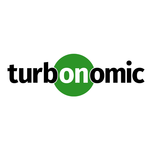Description

IBM Turbonomic

ZIF
Comprehensive Overview: IBM Turbonomic vs ZIF
IBM Turbonomic and ZIF (Zero Incident Framework) are both solutions designed to enhance IT infrastructure management and performance, yet they cater to slightly different needs and markets.
IBM Turbonomic
a) Primary Functions and Target Markets
- Primary Functions: IBM Turbonomic specializes in application resource management. It automatically manages resources such as CPU, memory, and storage to ensure applications have the resources they need to perform optimally. The platform uses AI and analytics to optimize performance, compliance, and cost by making real-time decisions on resource allocation.
- Target Markets: Turbonomic is aimed at large enterprises across various sectors, including finance, healthcare, retail, and telecommunications. It's particularly useful for organizations with complex IT environments that require automated and scalable resource management across cloud, on-premise, and hybrid infrastructures.
b) Market Share and User Base
- Market Share: IBM Turbonomic holds a significant share in the IT Operations Management (ITOM) sector, largely due to its longstanding presence and integration capabilities with other IBM and third-party IT solutions.
- User Base: Its user base primarily consists of large enterprises that require robust solutions for resource optimization across multiple IT environments. The platform is particularly popular among businesses undergoing digital transformation or cloud migration.
c) Key Differentiating Factors
- Automation and AI: Turbonomic leverages advanced AI-driven automation which continuously analyzes workloads and makes resource allocation decisions without manual intervention.
- Integration with Cloud Providers: The platform is known for its deep integration with major cloud providers like AWS, Azure, and Google Cloud, making it suitable for dynamic cloud environments.
- Scalability: Turbonomic can scale to handle the resource management needs of large and complex IT environments, supporting hybrid and multi-cloud strategies.
ZIF (Zero Incident Framework)
a) Primary Functions and Target Markets
- Primary Functions: ZIF is aimed at providing proactive IT management by anticipating incidents before they occur. It uses AI and machine learning to predict and resolve IT incidents, providing automation in root cause analysis, predictive analytics, and proactive remediation.
- Target Markets: ZIF primarily targets IT operations teams and service providers, especially those dealing with large-scale enterprise IT infrastructures. It's prevalent in industries where downtime can significantly impact operations, like banking, manufacturing, and utilities.
b) Market Share and User Base
- Market Share: ZIF is a growing player in the AI for IT operations (AIOps) space, appealing to organizations focused on incident prevention and operational efficiency.
- User Base: Its users often include IT departments of large organizations and managed service providers looking for tools to enhance operational resilience and reduce downtime.
c) Key Differentiating Factors
- Incident Prevention: ZIF's primary differentiator is its focus on preventing IT incidents through predictive analytics and machine learning, rather than simply responding to them.
- Root Cause Analysis: The platform emphasizes the automation of root cause analysis, enabling faster identification and resolution of issues.
- Proactive Remediation: ZIF offers capabilities to automatically implement remediation steps for potential incidents, minimizing human intervention and speeding up time to resolution.
Comparison
- Automation and AI: While both utilize AI, IBM Turbonomic focuses more on dynamic resource allocation, whereas ZIF targets incident prediction and prevention.
- Target Approach: Turbonomic is more aligned with optimizing performance and resource utilization, while ZIF emphasizes maintaining operational continuity by avoiding incidents.
- Integration: Turbonomic has strong cloud provider integrations, making it ideal for hybrid environments, while ZIF is tailored for environments where incident management and prevention are critical.
Both products cater to organizations looking to enhance IT operations, but the choice between them usually depends on whether the primary need is resource optimization (Turbonomic) or incident prevention (ZIF).
Contact Info

Year founded :
2010
+1 844-438-8872
Not Available
United States
http://www.linkedin.com/company/turbonomic

Year founded :
2020
Not Available
Not Available
United Kingdom
Not Available
Feature Similarity Breakdown: IBM Turbonomic, ZIF
When comparing IBM Turbonomic and ZIF (Zero Incident Framework), both solutions focus on optimizing IT operations and leveraging artificial intelligence (AI) to improve application performance and resource management. Here's a breakdown of their feature similarities and differences:
a) Core Features in Common:
-
AI-Driven Optimization:
- Both IBM Turbonomic and ZIF utilize AI to automatically optimize IT operations. They aim to ensure applications have the resources they need to perform efficiently.
-
Real-Time Performance Monitoring:
- Both platforms offer real-time monitoring of infrastructure and applications, providing insights into performance issues and capacity usage.
-
Predictive Analytics:
- Predictive analytics are employed by both to anticipate potential issues or bottlenecks, helping in proactive resource management.
-
Automation:
- Both solutions support a high degree of automation in monitoring, managing workloads, and adjusting resources, reducing manual intervention.
-
Cloud and Hybrid Environment Support:
- Support for hybrid cloud and multi-cloud environments is available, allowing management of on-premises and cloud-native applications.
b) User Interface Comparison:
-
IBM Turbonomic:
- The user interface of IBM Turbonomic is generally geared towards providing actionable insights through a clear dashboard. It is known for its straightforward, user-friendly visuals that highlight resource consumption and suggest optimization actions.
- The UI is designed to appeal to both IT administrators and C-level executives by presenting information in both detailed and high-level summary formats.
-
ZIF (Zero Incident Framework):
- ZIF’s interface emphasizes predictive and preventive insights, with a focus on providing an overview of incidents and potential risks.
- The platform aims to simplify incident management, offering a dashboard that is highly customizable, thus allowing users to tailor it to their specific needs.
c) Unique Features:
-
IBM Turbonomic:
- Data Flow Mapping: IBM Turbonomic offers advanced capabilities in mapping data flows across applications and infrastructure, giving deeper insight into dependencies and interactions.
- Integration with IBM Ecosystem: As part of IBM's broader ecosystem, Turbonomic can integrate seamlessly with other IBM solutions, such as IBM Cloud Pak, for a cohesive operational strategy.
- Comprehensive Cost Management: It provides detailed cost analysis and optimization suggestions, enhancing its value for businesses looking to balance performance against budgeting constraints.
-
ZIF:
- Zero Incident Framework: ZIF’s core differentiator is its focus on achieving zero incidents through extreme predictive analytics. Its framework is built to prevent incidents rather than merely responding to them.
- Deep AIOps Functionality: The solution provides advanced AIOps features, using machine learning extensively to automate the identification and resolution of incidents.
- ITIL-aligned Processes: ZIF integrates ITIL processes extensively, aligning its functions closely with industry-standard IT service management frameworks.
In summary, while both IBM Turbonomic and ZIF share common functionalities in performance optimization and AI-driven management, they each offer unique features that may appeal to different segments based on specific business needs and existing ecosystems. IBM Turbonomic is notable for cost management and integration within IBM's ecosystem, while ZIF provides deep AIOps capabilities focused on achieving zero incident operations.
Features

Not Available

Not Available
Best Fit Use Cases: IBM Turbonomic, ZIF
IBM Turbonomic and ZIF (ZIF represents Zero Incident Framework by GAVS Technologies) are both solutions aimed at optimizing IT operations, but they serve different use cases and cater to different needs. Here's a breakdown of the best-fit use cases for each:
IBM Turbonomic
a) For what types of businesses or projects is IBM Turbonomic the best choice?
-
Enterprise IT Environments: IBM Turbonomic is particularly suitable for large enterprises with complex IT environments. It provides real-time performance management and workload automation for hybrid cloud and application environments.
-
Cloud Management: Companies migrating to the cloud or operating in a hybrid cloud setup can benefit from its ability to optimize workloads and resource utilization across multiple cloud platforms like AWS, Azure, and on-premises data centers.
-
Cost Optimization Projects: Businesses looking to optimize costs while maintaining application performance can leverage IBM Turbonomic's capabilities to right-size their infrastructure and reduce unnecessary expenditures.
-
Performance-Sensitive Applications: Industries where application performance is critical, such as financial services or healthcare, can use Turbonomic to ensure applications always have the resources they need.
d) How does it cater to different industry verticals or company sizes?
-
Industry Verticals: Turbonomic is valuable across industries that require robust IT infrastructure management, including finance, healthcare, retail, and telecommunications. Its advanced analytics and automation cater to sectors that demand high-performance computing and stringent uptime requirements.
-
Company Sizes: While primarily aimed at large enterprises due to its comprehensive feature set and potential cost, midsize companies with complex IT needs can also benefit from Turbonomic’s offerings.
ZIF (Zero Incident Framework)
b) In what scenarios would ZIF be the preferred option?
-
Proactive Incident Management: ZIF is ideal for businesses focusing on zero incident strategies by using AI and machine learning to predict and prevent incidents before they occur.
-
SME Operations: Small to medium-sized enterprises that need a cost-effective yet efficient IT operations platform can leverage ZIF for proactive monitoring and incident management.
-
Digital Transformation Projects: Companies undergoing digital transformation can use ZIF to ensure their IT operations are streamlined and resilient, supporting innovation without the risk of increased incidents.
-
Service Assurance: Industries such as telecommunications and managed service providers, where service assurance is crucial, can benefit from ZIF's proactive approach to monitoring and maintaining service levels.
d) How does it cater to different industry verticals or company sizes?
-
Industry Verticals: ZIF is particularly useful in sectors such as IT services, telecommunications, and retail, where maintaining a seamless customer experience and operational efficiency through zero incidents is crucial.
-
Company Sizes: ZIF is adaptable for both SMEs and larger enterprises, with a flexible and scalable model that can fit the needs of diverse business sizes. Its AI-driven approach provides significant value regardless of the scale of the IT operations.
In summary, IBM Turbonomic is best suited for large enterprises with complex, cloud-based environments that need performance optimization and resource management, while ZIF excels in scenarios where proactive incident management and zero downtime are priorities, catering to both SMEs and larger organizations. Both tools enhance IT operational efficiency but focus on different aspects of IT management, addressing the unique needs of various industries and company sizes.
Pricing

Pricing Not Available

Pricing Not Available
Metrics History
Metrics History
Comparing teamSize across companies
Conclusion & Final Verdict: IBM Turbonomic vs ZIF
Conclusion and Final Verdict for IBM Turbonomic vs. ZIF
When comparing IBM Turbonomic and ZIF (ZIF AI-driven IT Operations), both products stand out in the realm of IT operations management and AIOps (Artificial Intelligence for IT Operations). Each offers distinct capabilities leveraged to optimize and automate IT infrastructure.
a) Considering all factors, which product offers the best overall value?
IBM Turbonomic provides the best overall value for organizations aiming for a balance between application performance, cost, and compliance in dynamic cloud environments. It excels in providing real-time insights and automation to ensure applications always get the resources they require at the lowest cost, while complying with business rules.
b) Pros and Cons of Choosing Each Product
IBM Turbonomic:
- Pros:
- Resource Optimization: Provides granular, automated resource management, ensuring applications get exactly what they need in real-time.
- Scalability: Suitable for large-scale enterprises with complex infrastructure, scaling from on-premise to hybrid and cloud environments.
- Integration Capabilities: Supports a wide range of platforms and integrates well with existing DevOps tools, enhancing overall ecosystem synergy.
- Proven Track Record: Established solution with a strong customer base and industry reputation.
- Cons:
- Complexity: Can be complex to deploy and manage, potentially requiring specialized training.
- Cost: Premium pricing may be a barrier for smaller organizations or those with budget constraints.
ZIF (ZIF AI-driven IT Operations):
-
Pros:
- AI-Powered Insights: Leverages AI to predict and prevent incidents, offering a proactive approach to IT operations.
- User-Friendly Dashboard: Intuitive interface that provides easy navigation and visibility into system health.
- Incident Reduction: Focus on reducing noise and preventing issues before they occur, enhancing uptime and reliability.
-
Cons:
- Niche Market: More suited for mid-sized enterprises that focus heavily on AI-driven predictive analytics.
- Fewer Integrations: Might support fewer integrations compared to more established competitors.
c) Recommendations for Users Deciding Between IBM Turbonomic vs. ZIF
-
Scale and Complexity of Environment:
- Choose IBM Turbonomic if you manage a large, complex IT environment needing robust automation and resource optimization tools with vast integration capabilities.
- Opt for ZIF if your focus is on incident prediction and reduction within a mid-sized enterprise, and if you prefer a more straightforward implementation process.
-
Budget Considerations:
- Consider IBM Turbonomic if your budget aligns with a premium product that offers extensive features and capabilities.
- For a more budget-friendly option with core predictive insights, ZIF might be the better choice.
-
Organizational Goals:
- If your primary goal is to continuously optimize resource allocation to save costs while maintaining application performance, IBM Turbonomic should be your go-to solution.
- If reducing incident response times and leveraging predictive analytics is your priority, ZIF provides an efficient, AI-driven approach.
In conclusion, both products have unique strengths catering to different organizational needs. Evaluating your organization's specific requirements, budget, and desired outcomes will guide you to the right choice between IBM Turbonomic and ZIF.
Add to compare
Add similar companies




